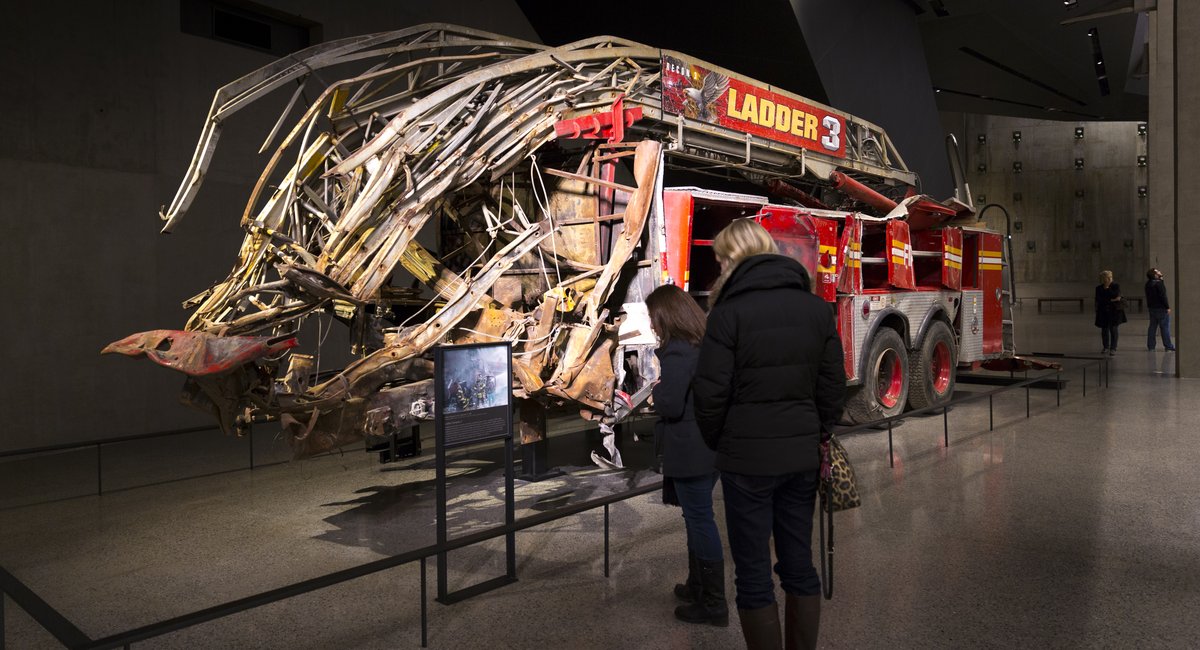The 9/11 Memorial and Museum, located on the site of the Sept. 11, 2001 terrorist attack that felled the World Trade Center, commemorates a tragedy and trauma that New York experienced in a way unlike any other city.
But even 23 years after the attack, many New Yorkers have a complicated relationship with the museum.
New York City residents accounted for just 6% of the museum’s visitors over the last year, while tristate area residents made up 20%, according to spokesperson Erin Gaddis. By contrast, roughly 60% of the Metropolitan Museum of Art’s visitors were from the metro area in 2023, according to the New York Times.
But other museums, which frequently rotate their exhibits, don’t center on a single event that’s so uniquely painful for New Yorkers.
“No place did the 9/11 attacks have a bigger impact than in New York City,” said Beth Hillman, president and CEO of the 9/11 Memorial and Museum. “Yet we’ve realized a lot of New Yorkers who are among the people most affected by what happened on 9/11 haven’t visited us for a lot of very understandable reasons.”
The museum, which opened in May 2014, has known the challenge of asking New Yorkers to visit one of the most difficult chapters in the city’s history. And families of some 9/11 victims have objected to their loved ones being part of the exhibit.
Queens resident Hector Calderon said that visiting the museum shortly after it opened was a heavy experience. The 58-year-old educator said he was in Williamsburg when he watched the second airplane crash into the towers and added that one of his former students died in the attack.
“I’ve only been once, it was very hard for me to be there altogether. I think they’ve done a really good job of how they let out the exhibits,” he said. “When I went there, I was triggered all over the place, you know, and I mean, when I went there, I wasn’t expecting it to do that. But as I think about it, I walked out of there like raw, like unnerved.”
Hillman said the museum is still working to bring in more New Yorkers and help them process their experiences.
The museum began its New York First Mondays program this summer, which waives the museum’s $33 admission fee for city residents on the first Monday of each month. More than 1,000 New Yorkers took advantage of the program’s first four iterations, according to the museum.
“We’ve had people telling us they’re having a positive experience and that they were grateful for the opportunity. So we want to expand this program in the future, and we’re looking for ways to do that,” Hillman said. “We find a visit to the museum is a powerful experience for all the people who come when they’re ready, often accompanied by friends or colleagues, and they get a chance to actually engage and remember — not only some of the hardships of that day, but also the remarkable way in which New York responded afterwards and recovered.”
Jesse O’Brian, a 52-year-old Bronxite, was in the city during 9/11, and said he first visited the museum two years ago. He’s since returned, and said both visits were difficult, but cathartic.
“It was somewhat eventful to deal with that and see the pain and suffering that everyone went through on that day, and still going through it as well to this day now,” he said. ”They actually build up all the events of that day, so it was a learning experience as well. There were certain things that I wasn’t aware of, but it was sort of helpful.”
Pablo Helguera is a professor at the New School’s College of Performing Arts with three decades of experience working in public programming at museums, including the MoMA and the Guggenheim. He lived in the city when the attacks occurred, and first visited the 9/11 museum last year.
“I had never felt the desire to visit,” he wrote in a blog post a few months after that visit.
He quoted friends and associates, who said the museum felt like “a memorial for outsiders,” as well as others who said it was too painful to revisit.
In an interview, he recalled tearfully reliving the pain of 9/11, “mostly surrounded by tourists for whom the story is more remote in space and time.”
“It’s a really traumatic event that for many of us is really hard to relive through and again, it’s like this place where you are,” Helguera said in an interview. “I just found myself so lost in that place going through these events with no one around me to really like to talk to. And then tourists for whom, this was like a new story, tourists with children and walking around seeing these horrific images.”
The museum offers tours, but for an additional cost that Helguera said not everyone can afford. Hillman said the museum is working on expanding the program.
Staci Onwuka from Staten Island visited for the first time four years ago and said the museum serves its purpose of remembering and honoring the tragedy. The 37-year-old said she was living in Brooklyn at the time of the attack, but learned more about that day through the exhibits inside.
“The museum is great, when you look at it you can tell the experience, how it happened, it tells stories bits and pieces,” she said. “For me it’s like a monument.”
